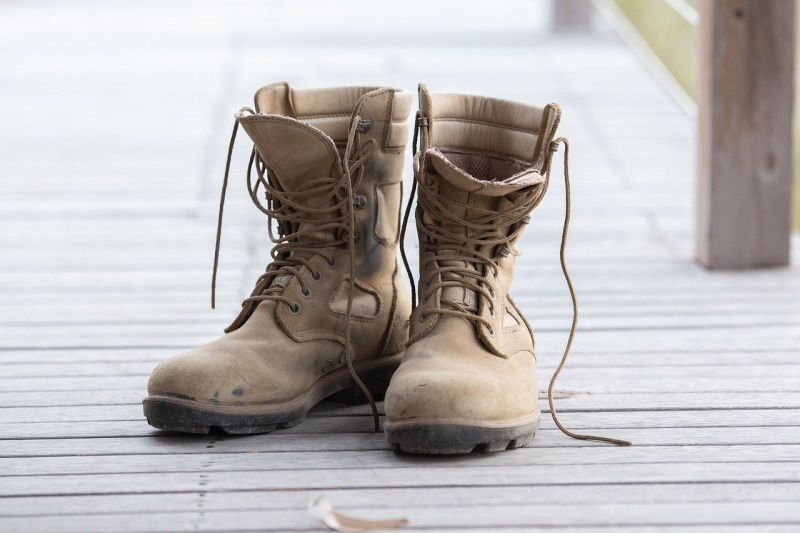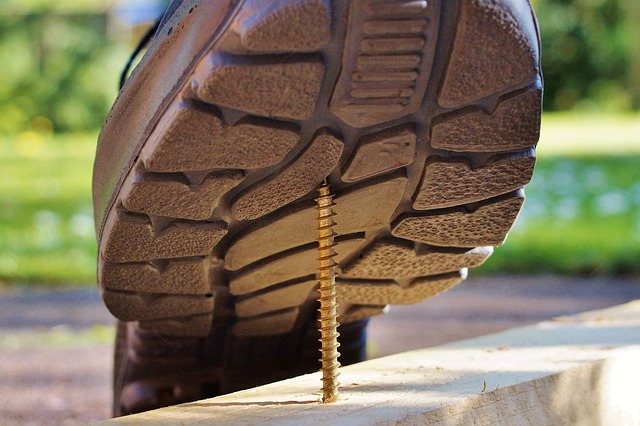According to the Bureau of Labor Statistics, approximately 60,000 foot injuries are reported every year. Apart from lost workdays, leg and foot injuries can lead to permanent disabilities – not to mention the millions of dollars spent for treatment and rehabilitation. As much as it’s almost impossible to prevent occupational leg and foot injuries, their prevalence, and occurrence can be minimized through safety footwear. However, all work boots are not created equal. And that’s why it’s important to purchase a pair that can adequately protect your feet, depending on the hazards and risks that you face at your workplace. With that said, here are some of the factors that you should consider when buying a pair of work boots.
Safety Toes
Your toes are highly vulnerable to a wide range of workplace hazards. Without proper protection, heavy falling and rolling objects can easily crush your toes, leaving you with serious injuries. And if your toes are injured, you will find it quite hard to walk or stand properly. To protect and keep your toes safe, most work boots and safety boots come with a safety toe. Safety toes are made of different materials. The most common safety toes that you will find in most work boots are:
Steel Toe Capped Shoes
Steel toe work boots have been around for many decades. In fact, they are the most common in many workplaces. Just like their name suggests, these work boots feature a safety toe made of steel. They are designed to protect the toes from falling objects and rolling machinery. Therefore, if your workplace has such hazards, then you should get yourself a pair of steel toe work boots. Besides providing maximum protection for your toes, steel toe work boots also tend to be cheaper than other types. One of the main drawbacks of these safety boots is that they are quite heavy, compared to other types. Also, they have a reputation for being uncomfortable to walk in all day. They may also become extremely hot or cold, depending on the environmental conditions.
Alloy Toe Work Boots
Alloy toe work boots are a reliable alternative to steel toe boots. They are usually made of lightweight materials such as titanium and aluminum. As much as they may be more expensive than their steel toe counterparts, they are much lighter. Also, the toe cap is thinner than that made of steel, thus giving your toes more wiggle room. You can use them in almost the same work environments that you would use steel toe boots. If you are looking for lightweight and comfortable safety toe work boots, then you should check out alloy toe work boots.
Composite Toe Boots
Just like their name suggests, composite toe work boots are made of different types of materials such as Kevlar, fiberglass, plastic, nylon, and carbon-fiber, among others. They are designed for workers who are looking for a flexible and lightweight pair of safety boots. Composite toe safety shoes tend to fall between steel toe boots and soft toe boots. Since they don’t conduct electricity, they are perfect for electricians. And since they are made of non-metals, they will not set off metal detectors.
Another benefit composite toe safety shoes is that they have a higher tolerance for cold and heat, compared to steel toe work boots. Therefore, they will keep your feet comfortable, even when you are working in areas that are extremely hot or cold. But as much as they may pass various safety standards, you should not use composite toe work boots in job sites that have risks of rolling machinery or falling objects, since they may not protect your toes adequately.
The type of safety that you choose will depend on various factors such as the hazards that you face at your workplace, the laws and regulations that govern your area, environmental conditions, price range, as well as fit, comfort, and weight. Composite, alloy and steel toe work boots all have their pros and cons. Furthermore, each type of shoe is designed for a specific situation. The most important thing is to choose a type of safety toe that can provide maximum protection to your toes.
Correct Size and Fit
As much as work boots are mainly designed to protect you against various workplace hazards, it’s important to choose a pair that fits your feet well. Working with ill-fitting shoes may leave you with blisters, hotspots as well as other forms of discomfort. As a result, you will find it extremely hard to perform your tasks, if your feet are aching. So, how do you choose work boots that fit your feet perfectly?
First, ensure you carry a pair of socks when you are going to buy work boots. Socks are available in different levels of thickness. For instance, winter socks are thicker than running socks. Therefore, make sure you carry a pair that you will be wearing with your work boots, and then fit your shoes with them. Also, if you have a foot condition that requires you to wear custom orthotics, then you also need to carry those insoles. Insoles will definitely interfere with the positioning of your foot inside the boot.
Once you’ve identified a pair of work boots that seem to suit your needs, put them on wearing your socks and then walk around the store with them. As you walk around with these shoes, you should check whether your toes have ample wiggle room. You should also check the level of ankle support, arch support, cushioning as well as their overall comfort level. Also, you need to check how the boots are constructed. If they are poorly made, then you should avoid them at all costs, regardless of how affordable they may appear to be.
It’s highly advisable to shop for work boots in the afternoon. Your feet will swell throughout the day. Therefore, trying on a new pair of work boots in the afternoon or evening when your feet are at their largest will go a long way in helping you get the right fit. And just like everything else, don’t rush the process. Take your time to try on different pairs and walk with them around the store. As much as it might appear as if you are wasting time, it’s definitely worth it. Also, if you have wide feet, then you should go for work boots for wide feet. Buying a bigger size of regular work shoes may not fit your feet well, and you may end up with chafing, blisters and heel slippage, among other issues.
Construction
Construction is an important factor to consider when choosing work boots. The way in which a certain type of shoe is made will affect its level of protection as well as durability. Work boots are constructed using four main methods – cement construction, vulcanization, Opanka, and Goodyear welt construction. Each construction method comes with its pros and cons.
- Goodyear welt construction: This method produces the most durable work boots that you can find on the market. It’s also one of the oldest methods of making shoes. In this method, a strip of leather is used to connect the upper, insole and the outsole. All the parts are then reinforced using adhesive and strong stitching. All the stitching points are then reinforced using a lock stitch to make sure that the thread doesn’t come off even if it breaks in one part of the boot. Apart from their exceptional durability, shoes made of Goodyear welt construction can be re-soled in case the sole is damaged, which can help to extend their lifespan. Goodyear welt construction produces work boots that can comfortably handle rugged work environments.
- Cement construction: Cementing is probably one of the most common methods used in making shoes. It provides an easy, cost-effective, and fast means of attaching the sole of a shoe to the upper parts. In this shoemaking process, the upper part of the shoe is connected to the sole unit using an adhesive. Shoes made using this method are lightweight, comfortable and affordable. They are best suited for light-duty jobs. The only downside for cement construction is that these shoes cannot be re-soled, once the sole gets damaged. In short, you will have to replace them. Boots made of cement construction tend to have a shorter lifespan compared to those made of Goodyear welt construction.
- Opanka: In this method of construction, the sole, uppers and insoles are all hand-sewn together, using double-needle stitching. Opanka construction produces work boots that are extremely flexible, durable and comfortable.
- Vulcanization: This construction method produces work boots that are waterproof and durable. With vulcanization, the upper and the outsole are usually molded together using a band of soft rubber. They are then heated in an oven. Work boots made using this process are also resistant to heat. Therefore, if your workplace has heat hazards, then you should opt for work boots produced via vulcanization.
As noted earlier, each construction method has its pros and drawbacks. Also, no single construction method is the best. Each method serves different tastes, purposes, and preferences. While you may be looking for a work boot that is flexible and costly, someone else may be looking for a long-term solution. It all comes down to choosing a pair that aligns with your needs.
Slip Resistance
Slips, falls and trips are among the leading causes of workplace injuries. Therefore, slip resistance is an important factor to consider when you are buying safety footwear. Slip resistance in work boots depends on the outsole material, as well as the tread pattern. Most work boots come with outsoles that are either made of rubber and TPU. Rubber and TPU outsoles provide incredible slip resistance in surfaces that have oil and grease, making them ideal for oil rig workers as well as anyone else who works in damp or wet conditions. However, TPU outsoles tend to be more durable than rubber. They are also resistant to abrasion, splitting, and chemicals. As for the tread, you should choose outsoles whose pattern can channel grease, oil and other sediments away from the outsole, so that it can grip the surface effectively. For instance, tightly spaced treads will provide reliable traction in slippery indoor environments while those with widely spaced treads are best suited for slippery outdoor workplaces.
Closing Remarks
Buying a pair of work boots can appear like a time-consuming process, with so many options to choose from. However, as long as you know your needs as well as the features that you should look for, you will easily find a pair of boots that can protect your feet properly, make your workday easier and help you to focus on the task at hand.





0 comments